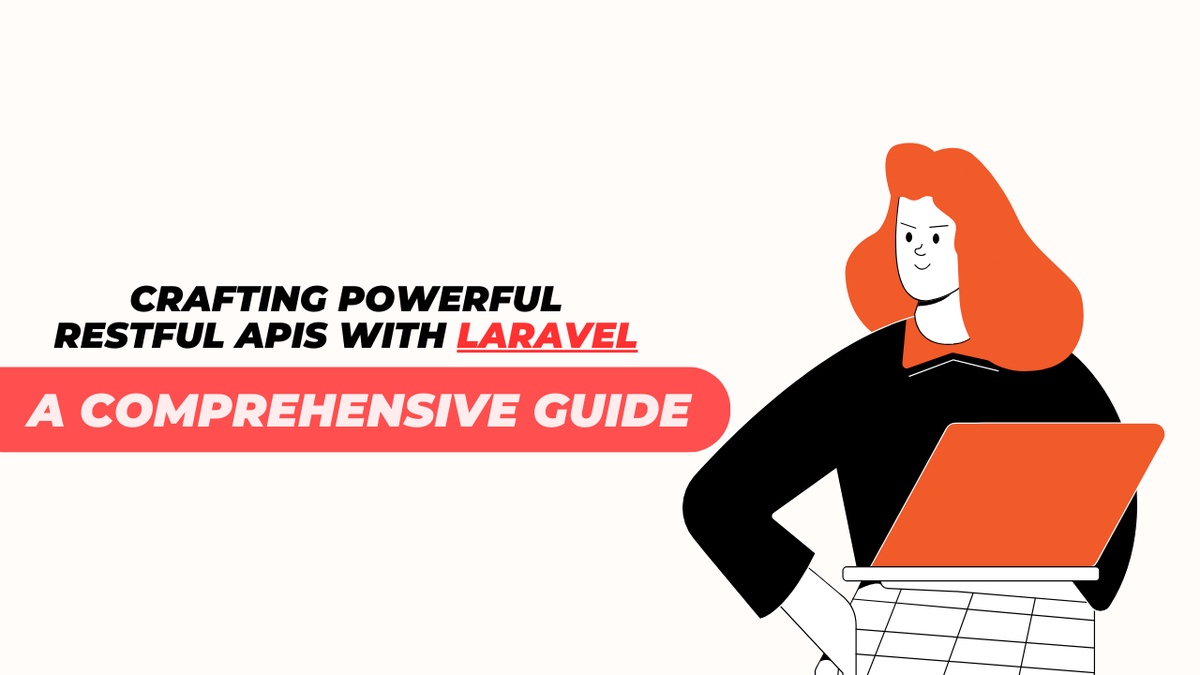RESTful APIs have become the backbone of modern web applications, providing a flexible and scalable architecture for building and consuming data. Laravel, a popular PHP framework, offers robust tools and features for creating RESTful APIs effortlessly. In this article, we'll explore the process of building and consuming RESTful APIs with Laravel, while also highlighting the role of professional Laravel web development services in API development and integration.
Understanding RESTful APIs
REST Principles:
- REST (Representational State Transfer) is an architectural style for designing networked applications. RESTful APIs adhere to REST principles, emphasizing stateless communication, resource-based URLs, and standard HTTP methods (GET, POST, PUT, DELETE) for performing CRUD (Create, Read, Update, Delete) operations.
Resource-Oriented Design:
- RESTful APIs are resource-oriented, meaning that they expose resources (e.g., users, posts, products) as endpoints accessible via unique URLs. Each resource is identified by a URI (Uniform Resource Identifier), and clients interact with these resources using standard HTTP methods.
Building RESTful APIs with Laravel
Defining Routes:
- Define routes for your API endpoints using Laravel's routing system. Use resourceful routing to automatically generate routes for CRUD operations on resources. Laravel's Route::apiResource method simplifies the process of defining RESTful routes for controllers.
Creating Controllers:
- Create controllers to handle API requests and perform CRUD operations on resources. Laravel's resource controllers provide boilerplate methods for handling CRUD operations, making it easy to build RESTful APIs.
Implementing Resourceful Actions:
- Implement resourceful actions (index, show, store, update, destroy) in your controllers to handle API requests. Use Laravel's request validation and resource transformers to ensure data integrity and format API responses according to your specifications.
Authentication and Authorization:
- Secure your API endpoints using Laravel's authentication and authorization mechanisms. Implement token-based authentication using Laravel Passport or JSON Web Tokens (JWT) for stateless authentication. Use middleware to enforce access control and protect sensitive resources.
Consuming RESTful APIs with Laravel
HTTP Client:
- Laravel provides an expressive HTTP client for making HTTP requests to external APIs. Use the HttpClient facade to send HTTP requests and handle responses seamlessly within your Laravel application.
API Integration:
- Integrate external RESTful APIs into your Laravel application to consume data or perform actions. Use Laravel's service container and dependency injection to manage API clients and encapsulate API logic within service classes.
Conclusion
RESTful APIs play a crucial role in modern web development, enabling seamless communication and data exchange between web applications. By leveraging Laravel's powerful tools and features, developers can build and consume RESTful APIs effortlessly, adhering to REST principles and best practices. Additionally, partnering with professional Laravel web development services can provide you with the expertise and support needed to design, build, and integrate APIs effectively, ensuring the success of your web projects. Remember, building and consuming RESTful APIs is a collaborative effort that requires careful planning, implementation, and ongoing maintenance to achieve optimal results.


No comments yet